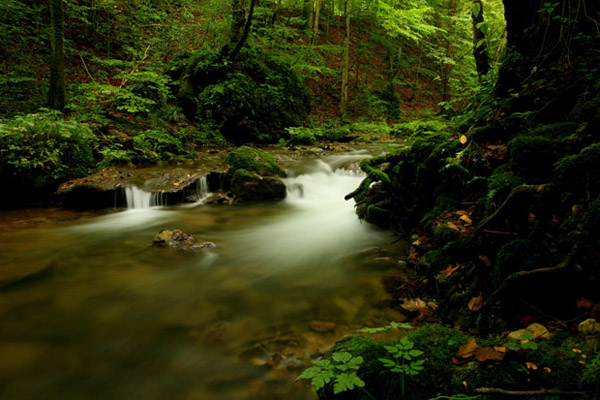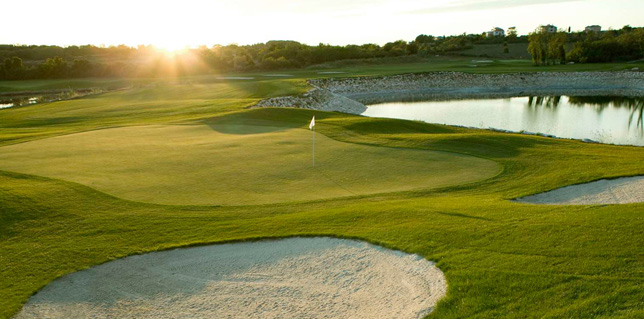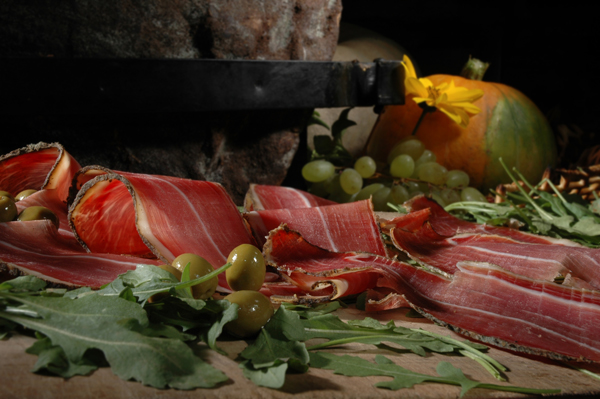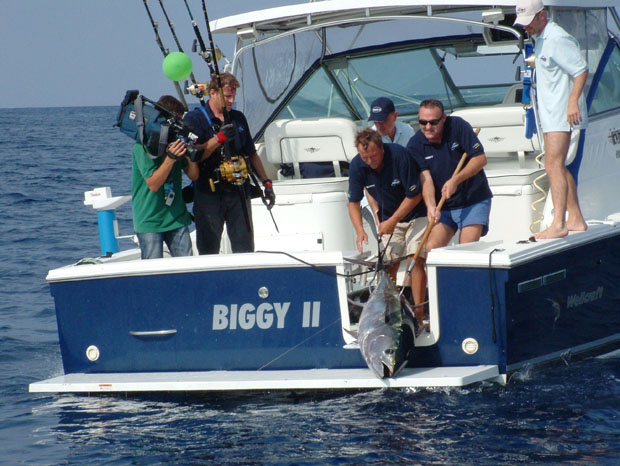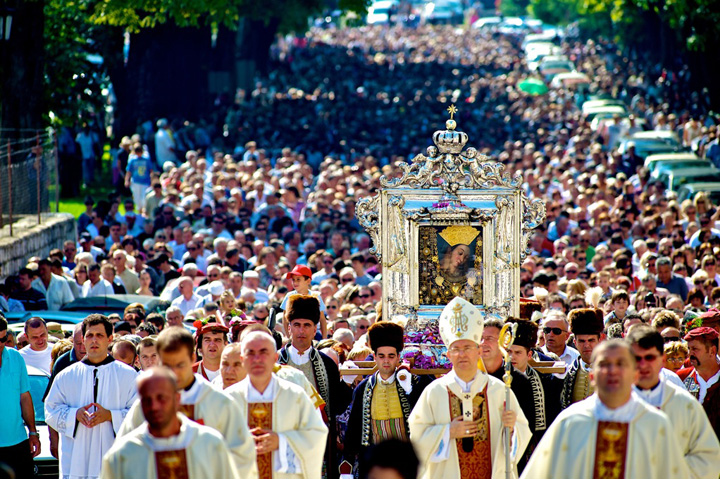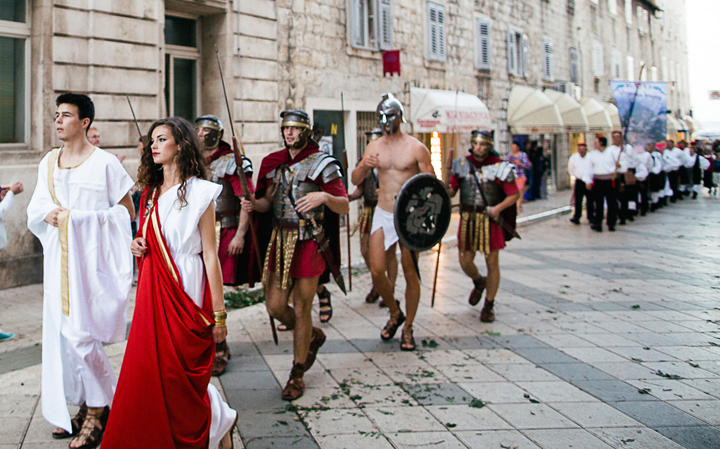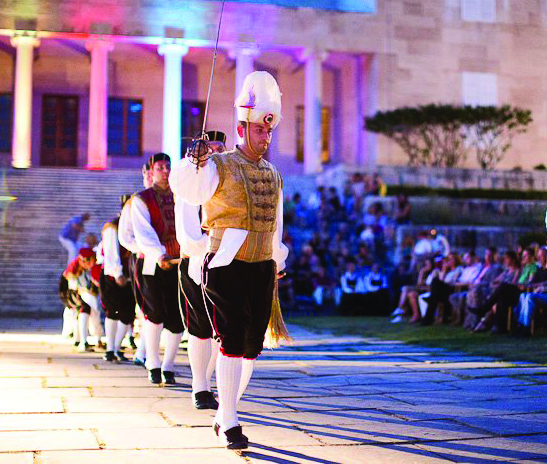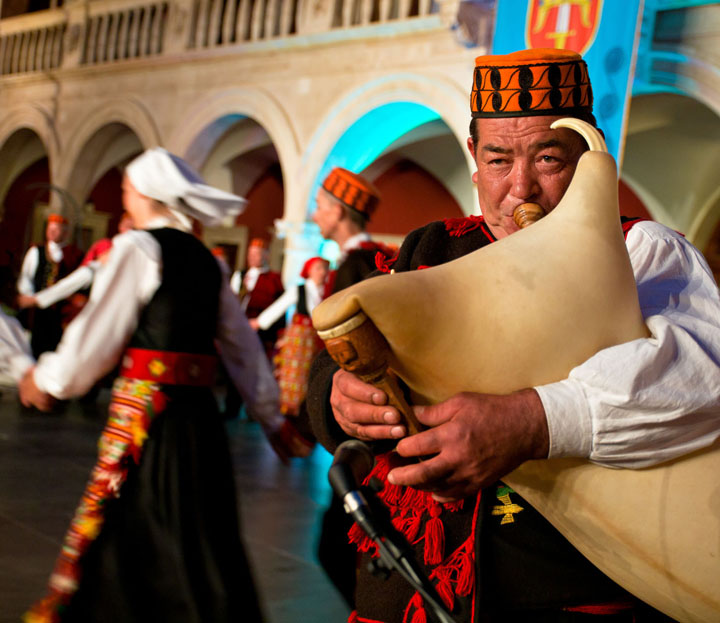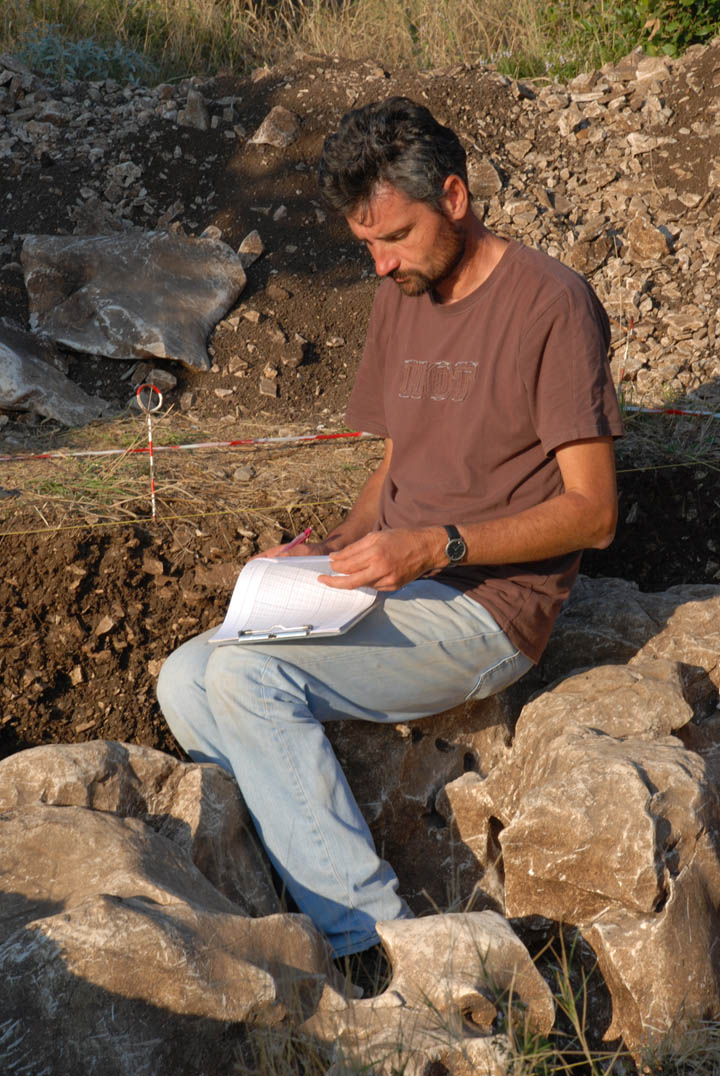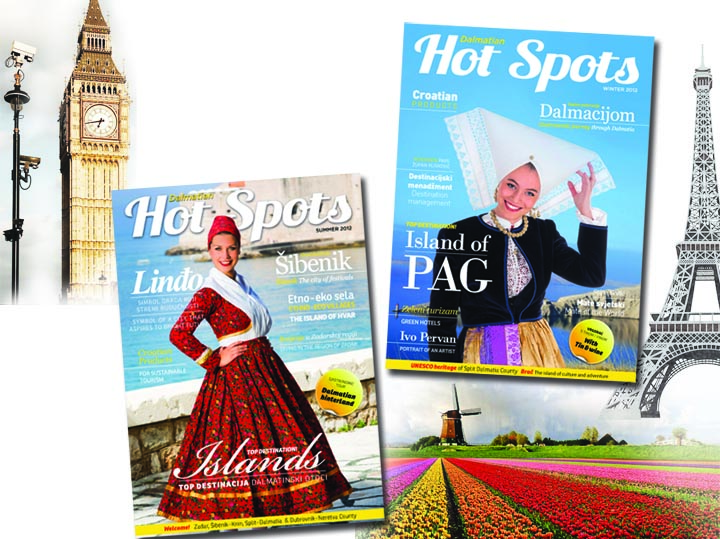Prestigious awards for Zagreb County Tourist Board
20. INTERSAS, 16. ITF’CRO, 12. KEA/EFE-CRO
Zagreb County Tourist Board was, from 6th Nov to 9th Nov in Solin, presented on 20th INTERSTAS 2013/International tourist, tour film, landscape festival – International Club of merited for tourism, 16.ITF’CRO 2013 / International tour film Festival and 12th KEA/Entente Florale Europe – CRO
On the final ceremony Golden flower of Europe ’2013. was assigned to Zagreb County Tourist Board and Povelja FEST to director – mr.sc. Ružica Rašperić.
A special recognition in 61 movie competition on 16.ITF’CRO 2013 won the Zagreb County Tourist Board and the film “Coutryside Poetry” by Mark Vrdoljak.
[nivo effect="fade" directionNav="button" controlNav="true" width="600px" height="360px"]
[image]http://hotspots.net.hr/wp-content/uploads/2013/11/Dvorac-Lužnica.jpg[/image]
[image]http://hotspots.net.hr/wp-content/uploads/2013/11/Potočić-1.jpg[/image]
[/nivo]
Green sport for a dazzling future in tourism
GOLF IN CROATIA
[nivo effect="fade" directionNav="button" controlNav="true" width="600px" height="360px"]
[image]http://hotspots.net.hr/wp-content/uploads/2013/11/golf2.jpg[/image]
[/nivo]
The grandeur and stylishness of this sport originated in middle ages in Scotland, certainly cannot be denied, since it generates a variety of facilities and attracts visitors of a high financial leverage. But in the context of our country, it also has an enormous tourism potential, to the extent that in metaphorical terms, it was called a „magic wand“ that can revive our islands and contribute to the exclusivity of national tourist attractions. precisely in these facts lies our interest in this touristic phenomenon – except for what golf can undoubtedly do for us, let us consider what we can do for Croatian golf.
Given that golf attracts fans since 14th century with unabated intensity, in our opinion there must be something to that sport, that magical je ne sais quoi factor (in french, „that certain something“)! Nowadays an invitation to golf, is a very recognizable symbol in the developed countries, and additional amenities and facilities that the sport generates, are capable of effectively improving tourist offer of any area.
Given the current situation in Croatia, where exceptional efforts of tourism professionals are focused on the expansion of our off-season offer, we can say that golf is not just a good idea, but a necessity. In fact, it is interesting to note that Croatia lost several organizational candidacies of international character, just because of the inability to offer the possibility of playing golf to the participants!
RESOURCES
Ironically, thanks to its geographic features and a pleasant and mild climate, Croatia has a fantastic initial potential precisely for the development of this sport. Our abundant and diverse natural beauty contributes to the invigoration of body and spirit at the very heart of golf, as well as the dynamics of the game itself. In this regard foreign investors and experts are particularly interested in the area of Istria and the Croatian Zagorje castles, and in the Dalmatian coast and islands. Istria and Zagreb area are especially attractive because of the proximity of the existing golf courses in Slovenia and Austria (spatial distance is an important factor when it comes to motivation for players to go to another site), and Dalmatia and the islands due to the mild climate and the possibility of practicing golf all year round . The quality of the weather can really be crucial when it comes to the "fate" of a golf destination, as long rainy and cold periods can have a critical impact on their visitor frequency.
Development of golf on the islands, which enjoy beautiful weather even in the winter months, would be of particular importance, as it would encourage the expansion of tourist offer outside the summer season, which is the issue the tourism sector often faces.
LOCATIONS
Currently the most dominant golf destination in Croatia is Istria, which boasts as many as 14 potential sites for the development of golf tourism. First Istrian professional golf club, Golf Club Adriatic, is 6,360m long and stretches over 80 hectares, and there is an additional course of 4,690m in length. Undulating terrain and idyllic scenery make it equally interesting to the well-established players and beginners. Furthermore, one of the greatest golf courses in Europe is situated in Brijuni and was once the favorite destination of European aristocracy in the early 20th century. It offers the privilege of playing golf on the beach embellished by Mediterranean fauna. It is also necessary to mention a very active and competitive Golf Club "Motovun", Golf Club "Medulin" and attractively designed driving ranges in Umag and on the Krk island.
In the area of Slavonia, there are plenty training grounds for long and short game, and Golf Center "Novi Dvori" in Zaprešić near Zagreb is one of the few sites that offers the possibility of playing at night.
In addition to the existing golf courses, there are new construction projects. One of the best known is the Golf Park Dubrovnik project, whose fields of 9 and 18 holes are personally designed by one of the greatest players in history, Greg Norman, who, according to the initiators of the project, believes that every playground must offer a unique, unforgettable experience.
CONTROVERSY
Unfortunately, the development of golf in Croatia elicited numerous discussions which insinuate that the investments in this sport hide personal interests of individuals. As a magazine dedicated to the promotion of national tourism, we welcome every sincere initiative to hasten its progress, and in this regard we recognize the extraordinary potential of golf. Another type of controversy relates to the ecological threat to the area which would be turned into a golf course. Since golf has always been in accordance with nature, we support adherence to high ecological standards of construction, which wouldn’t disturb the natural balance or include invasive interventions on the environment.
Finally, if, for example, few years ago Turkey skyrocketed as a hit destination for fans of this highly profitable sport, we don’t see any reason why couldn’t we work out our own place in the golfers’ sun as well!
Foto: www.golf-adria.com/
Split-Dalmatia County this season broke a tourist record
INTERVIEW: Joško Stella, director of the Split-dalmatia county tourist board
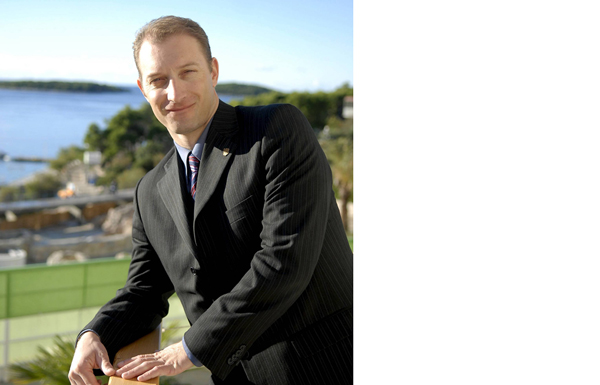 According to the current data, the tourism in Split-dalmatia county even in off-season resumes its upward trajectory. At the recently held days of tourism in Zadar, its center – the city of Split, was declared a winner in the category of medium-sized tourist destinations and distinguished itself as the second most recognizable tourist destination after Dubrovnik. The numbers are the best indicator of increase in arrivals and overnight stays - we asked the director of the Split-dalmatia county tourist board, Joško Stella, about the key factors of such a success.
According to the current data, the tourism in Split-dalmatia county even in off-season resumes its upward trajectory. At the recently held days of tourism in Zadar, its center – the city of Split, was declared a winner in the category of medium-sized tourist destinations and distinguished itself as the second most recognizable tourist destination after Dubrovnik. The numbers are the best indicator of increase in arrivals and overnight stays - we asked the director of the Split-dalmatia county tourist board, Joško Stella, about the key factors of such a success.
In terms of tourism, Split-Dalmatia County this season broke a sort of record. According to your opinion, to what do we owe such extraordinary results?
Outstanding results are the product of many years of branding Dalmatia, great work and dedication of all employees in the tourism industry. As for Split-Dalmatia County Tourist Board, we have prepared a season using an advanced form of internet marketing mix of advertising, trade shows, journalists and newly brought agents, sponsored articles in the foreign press, and special presentations on the Scandinavian and Polish market, which proved as a great strategy. Markets in which we have invested the most are precisely those with the reported growth of over 20% - the Polish market, UK and Scandinavia, so the correlation price-performance is obvious.
To what extent Split-Dalmatia County invests in the development of special forms of tourism? Are there certain segments of tourism in which you see a remarkable potential?
Split-Dalmatia County has an elaborate strategy for the development of cultural tourism, and of rural tourism as well. These are selective forms of tourism that we work on in order to prolong the tourist season. Apart from them, we see the future in active holidays, health tourism and similar specific tourism forms that are just perfect for sustainable development and the extension of the tourist season.
What are tourism development strategies of Split-Dalmatia County in the future? What concrete measures will be taken to improve the overall quality of tourism?
In the future, we would like to pay more attention to the destination management and the inclusion of more subjects in it, in order to jointly define higher quality tourist offer.
We already did a set of 9 educations for private owners this year, and in cooperation with UHPA, by the end of the year we will hold trainings for destination management of companies and announce a competition to help them. So, our goal is to develop new tourism products.
What do you think about the new organization of tourist boards according to the DMO system? Do you think that the new system is capable of improving the performance of tourist boards, and in which aspects?
I believe that the new organization of tourist boards is a great challenge, and it demands an extensive and thorough discussion which would result in the evolution of the system towards DMO quality – a process that certainly requires some time.
Open door days of agritourisms in Istria
PROMOTION OF RURAL HOUSEHOLDS AND THEIR FARMS
03.11.2013 - 24.11.2013
Open door days of agritourisms in Istria is organized by AZRRI ltd - Agency for Rural Development of Istria in cooperation with Istrian county agritourisms. The goal is to promote rural households and their farms, along with Istrian gastronomy as a trademark of rural areas. And, in that way surpass regional significance and become an internationally interesting destination. With the revival and expansion of traditional food and product, the offer is slowly returning to the countryside, to the flora and fauna of villages and hospitable rural household owners, much to the delight of the fans of good taste.
Open door days of agritourisms in Istria will be held from 03.11. to 24.11. (Sundays only) and 11 agritourisms will be included which will offer menu with promotional price of 60,00 HRK.
The program and menù of Open door days of agritourisms in Istria you can download HERE (only in croatian).
Info:
Foto: www.istra.hr
Join the hunt for real fishing trophies
[nivo effect="fade" directionNav="button" controlNav="true" width="600px" height="360px"]
[image]http://hotspots.net.hr/wp-content/uploads/2013/11/big-game-fishing4.jpg[/image]
[image]http://hotspots.net.hr/wp-content/uploads/2013/11/Jezera-12.jpg[/image]
[image]http://hotspots.net.hr/wp-content/uploads/2013/11/jezera-22.jpg[/image]
[/nivo]
Jezera Paradise vacation in a horseshoe-shaped bay
BIG GAME FISHING
I f you look at any picture of Jezera captured from the air, the first thing you’ll notice is an interesting form of a horseshoe. Their name (the term Jezera in english means lakes) comes from large ponds produced by rains that flow into the valley. From times immemorial horseshoes have been a symbol of good luck, so we believe that holidays in Jezera will remain in your best memories! In addition to numerous wild coves waiting to be explored, at your disposal there are well-arranged beaches: Zaratić and Kučine.
The fans of walking and cycling will appreciate numerous paths and trails through olive groves and pine trees, and organized Nordic walking – one of the most effective and safest physical activities. If you would like to ride or participate in donkey and horse races, visit the farm “Kukurin”. For football fans FC Jezera organizes tournaments for children and adults, and association „Južne strane“ is renowned for wooden boat on Latin sail regattas. Pilgrims should visit Jezera on the feast day of Saint Costantius (May 4 and 10), to participate in the blessing ceremony of the Saint Nicholas’ church in the Murtar bay. A variety of possibilities for the practice of water sports can be discovered at the gravel/concrete beach of “Lovišće” tourist resort. A 220-berth Marina, boating academy and sailing school are also at guests’ disposal.
Famous BIG GAME FISHING competition takes place in late September – join the hunt for real fishing trophies, such as bluefin tuna, swordfishes and sharks! Enjoy performances by folklore groups from the region within Jezera’s sea days (from July 6 till end of September), presentations of original handicrafts and traditional cuisine (The Way Our Ancestors Lived and Celebrated), fig festival (August 17), harmony singing meet-ups, poetry nights... And when you get tired of partying, try some of the traditional dishes - simple but delicious fried pastry - prispalji, dried octopus with eggs, fish stew with potatoes and jezerski zelenjak!
Religious tourism in Dalmatia
Apart from the sun, sea, beautiful bays and picturesque towns, excellent food, wine and olive oil, many travelers come to Dalmatia for religious tourism as well. Numerous shrines, beautiful churches, interesting religious events and tours, have a great potential for the development of the religious tourism industry, which counts up to several hundred million arrivals per year on a global scale. Although each place, even the smallest one, has its own religious feast, for this occasion I will single out some of the most important events.
SPLIT – THE FEAST OF SAINT DOMNIUS
The May 7 feast of Saint Domnius - Split’s patron saint, is certainly amongst major religious celebrations. It attracts a number of people from Split and its hinterland to central church events and folk festivities. A multi-day program is followed by a series of cultural, sporting and social events, with the traditional folk fair held on the city’s main waterfront promenade - Riva. Contact: Tourist Board of Split, Hrvatskog narodnog preporoda 7, +385 (0)21 348 600.
SOLIN – THE NATIVITY OF MARY
Solin – a small town on the Jadro River, only few miles away from Split, celebrates the religious feast of the Nativity of Mary on September 8, which attracts thousands of pilgrims from all over Dalmatia. According to tradition, there were numerous elm trees surrounding the old church of Our Lady of the Island, and for this reason people called it Gospa u Bristima (Our Lady of the Elms). Contact: Primordial Shrine of Our Lady of the Island, Gospin otok 1, 21210 Solin, 021-210-646.
SINJ – THE ASSUMPTION OF MARY
The August 15 celebration of the feast of the Assumption traditionally has its forte in Sinj, where believers from broader region come to bow to the Miraculous Lady of Sinj. Days before the central celebration of the Assumption of the Blessed Virgin Mary, thousands of pilgrims from Split, Solin, Kaštela, Trilj, Imotski, Livno, Široki Brijeg and Bosnia set off to travel for hours, some of them even for days, to bow at the shrine of the Miraculous Lady of Sinj. Contact: www.gospa-sinjska.hr, Parish Office: Fratarski prolaz 4, 21230 Sinj, 021 - 707-010.
VEPRIC – THE NATIVITY OF MARY
Vepric, a well-known Marian sanctuary, is a must-stop for numerous travelers and pilgrims. Shrine of Our Lady of Lourdes was established on the 50th anniversary of the apparitions at Lourdes, and its center is the cave with Our Lady's image next to the main road in a beautiful wooded landscape. It is possible to make a pilgrimage at Vepric on a daily basis, but central religious events take place on 7th and 8th September. Contact: Shrine of Our Lady of Lourdes, Vepric, pp. 66, 21300 Makarska, 021/616 336, 021/612 622.
ČIOVO – OUR LADY OF STOMORIJA
With several of its small churches, in recent years Čiovo imposed itself as an interesting religious destination, especially because of captivating stories about the hermits that lived in them and their miraculous powers, which is another motive for the increasing growth of the spiritual tourism. Pilgrims and tourists within the religious tours often visit small church of the Holy Cross, and the shrine of Our Lady of Prizdnice in Slatine. It is the shrine located in Slatine on Čiovo, near the UNESCO town of Trogir. Pilgrimages take place four times a year, on following holidays: Easter Monday, Whit Monday, Holy Name of Mary, and Our Lady of the Immaculate Conception, 8 December. Contact: Tourist Board of Trogir, Trg Ivana Pavla II / 1, 21220 Trogir, 385 (0) 21 885 628.
VISOVAC – OUR LADY OF THE ANGELS
Monastery of Our Lady of Grace and the church of Our Lady of the Angels, built by Franciscan monks on the islet of Visovac situated in the middle of a lake on the river Krka in the Krka National Park, attract particular attention. Central religious event for thousands of pilgrims takes place on the 2nd August, on the feast of Our Lady of the Angels. Visovac can be reached by excursion boats, in an organized transport. Contact: Tourist Board of Šibenik www.sibenik-tourism.hr, +385 (0) 22 212 075 / +385 (0) 22 219 073, Office of the National Park Krka 022-201-777.
[nivo effect="fade" directionNav="button" controlNav="true" width="620 px" height="360px"]
[image]http://hotspots.net.hr/wp-content/uploads/2013/10/vjerski-turizam-Sinjska-gospa.jpg[/image]
[image]http://hotspots.net.hr/wp-content/uploads/2013/10/Visovac.jpg[/image]
[/nivo]
MEĐUGORJE
Međugorje is a must-stop of every pilgrim; it is the place of the apparition of the Blessed Virgin Mary, due to which this small destination in Herzegovina is visited by millions of people from all around the world. Međugorje has three privileged places of pilgrim gatherings – the Apparition Hill, the Križevac Hill, and the Parish Church. Gatherings are organized on a daily, weekly and yearly basis with an emphasis on the major feasts of Our Lady: Easter, Christmas, Pentecost, New Year, and are most frequent in May and October. The largest gatherings take place on the 25th anniversary of the apparitions of Our Lady (June 25), and on the Exaltation of the Holy Cross. Contact: Sanctuary Information office, + 387 36 651 988, www.medjugorje.hr.
Gratitude and strong faith of the Sinj pilgrims are evident even from the painting of the Miraculous Lady of Sinj, for the most part covered in gold jewelry and pearls - the gifts of those who have come to worship her. It is believed that it was created in the 14th century by a painter from Venice.
Dates of religious festivities in 2013.:
Split - May 7
Međugorje – June 25
Visovac – August 2
Sinj – August 15
Solin – September 8
Vepric – September 8
Čiovo – December 8
Dalmatian hot spots - Hot Summer edition
Dear readers,
In front of you is another issue of our magazine realized to show the world with lots of love the beauty of our region. We take you on another unforgettable journey to Dalmatia, and it’s up to you to decide where exactly. Seemingly so similar, and in fact so different, each of our destinations has its own visual, cultural, historical, and even gastronomic identity. However, what all of them have in common, is a hearty welcome. Will it be a visit to our stone pearl – the city of Dubrovnik, and the tasting of its must-try delicacies dating back to 14th and 15th century? A cruise that takes you to the best hidden coves of Dalmatian enchanted islands? Or a gastronomic adventure on the island of Brač, where the visual aspect of food, like, for example, delicious hrapoćuša cake, reflects the visual appearance of the environment? Prepare for a rather tasty journey! Are you among those who even during the summer heats don’t give up on recreational activities? Sea or river, choose between windsurfing, canoeing or rafting... Or you can choose hiking under the careful supervision of one of mountaineering associations. And when the hot summer day comes to an end, listen to the stirrings of warm Dalmatian soul, through the song of harmony singing groups, through the vivid sounds and colors of the Mediterranean fiesta bursting with life and joy, visited by lively groups of tourists mingling with local people, united in one thing - and that is love for this beauty...
[nivo effect="fade" directionNav="disable" width="360px" height="720px"]
[image]http://hotspots.net.hr/wp-content/uploads/2013/09/01.jpg[/image]
[image]http://hotspots.net.hr/wp-content/uploads/2013/09/10.jpg[/image]
[image]http://hotspots.net.hr/wp-content/uploads/2013/09/13.jpg[/image]
[image]http://hotspots.net.hr/wp-content/uploads/2013/09/44.jpg[/image]
[image]http://hotspots.net.hr/wp-content/uploads/2013/09/52.jpg[/image]
[image]http://hotspots.net.hr/wp-content/uploads/2013/09/62.jpg[/image]
[image]http://hotspots.net.hr/wp-content/uploads/2013/09/84.jpg[/image]
[/nivo]
Traces of Dalmatian past
[nivo effect="fade" directionNav="button" width="720 px" height="400 px"]
[image]http://hotspots.net.hr/wp-content/uploads/2013/06/studiopapaja_hotspots_016.jpg[/image]
[image]http://hotspots.net.hr/wp-content/uploads/2013/06/studiopapaja_hotspots_015.jpg[/image]
[image]http://hotspots.net.hr/wp-content/uploads/2013/06/studiopapaja_hotspots_014.jpg[/image]
[image]http://hotspots.net.hr/wp-content/uploads/2013/06/studiopapaja_hotspots_010.jpg[/image]
[image]http://hotspots.net.hr/wp-content/uploads/2013/06/studiopapaja_hotspots_009.jpg[/image]
[image]http://hotspots.net.hr/wp-content/uploads/2013/06/studiopapaja_hotspots_007.jpg[/image]
[image]http://hotspots.net.hr/wp-content/uploads/2013/06/studiopapaja_hotspots_006.jpg[/image]
[image]http://hotspots.net.hr/wp-content/uploads/2013/06/studiopapaja_hotspots_004.jpg[/image]
[image]http://hotspots.net.hr/wp-content/uploads/2013/06/studiopapaja_hotspots_003.jpg[/image]
[image]http://hotspots.net.hr/wp-content/uploads/2013/06/KUD-Vrgoračka-krajina1.jpg[/image]
[image]http://hotspots.net.hr/wp-content/uploads/2013/06/BCP_4946.jpg[/image]
[/nivo]
DALMATIA FROM ANTIQUE TO THE PRESENT
Despite the bad weather, which surprised many Split residents and their guests, on the 7th of June, on Prokurative square, cultural manifestation ''Traces of Dalmatian Past – Dalmatia from antique to the present'' was held.
In this extraordinary ambience of one of the most beautiful squares in Croatia, for a moment we were taken back to the past to experience sounds, tastes, scents and spirits of days of yore.
The audience, that included deputy prefect of Splitsko- Dalmatinska County Ante Šošić, County’s tourist association director Joško Stella and counsellor of ministry of tourism Ivo Bašić, had a chance to enjoy in rich entertaining programme.
The program included 7 short performances of cultural-historical character which showed the most exciting events from Dalmatia's history and culture, including those of its islands, coast and Dalmatinska Zagora.
The manifestation was organized by Dalmatian Hot Spots magazine and Dalmatia Event association.
It started with procession of all performers which was followed by pleasantly surprised tourists.
Each group of performers set a stand where they presented old crafts and manufacturers from their hometowns.
Folklore association Kumpanija from Vela Luka was first to perform its famous knight's dance called Ples od boja. It is an old sword dance performed in a memory of defeat of Turkish conquerors by national guard of Korčula.
To the utmost joy of the audience, Emperor Diocletian also appeared with his wife Priska, his army and gladiators. This performance showed the life of Diocletian and gladiator fights in a comic way, while specially interesting were authentic costumes of all performers, from military armours to Diocletian's luxury cloak.
During their short performance, Amateur Theatre of Sinj showed famous defence of city of Sinj from Turkish invaders, putting the special emphasis on legend by which Mother of Mercy played a key role in this great defence.
Historic military unit Kliški Uskoci took us back to 1537 and showed a part of the Battle of Klis between Turks and Klis people.
Old crafts and customs of Dalmatinska Zagora were shown by members of cultural and art society Vrgoračka krajina. They had a really strong performance that included ojkanje – a special way of singing that comes from Dalmatinska Zagora which was included in UNESCO list of endangered non-material heritage in 2010.
Amateur Theatre of Šolta performed a short play about the eternal rivalry between Brač and Šolta people over the property of small island of Mrduja. Their performance included famous Mrduja pulling – a contest where two teams struggle to pull the islet with ropes as close to their own island.
This project presented tourist offer of Splitsko-Dalmatinska County. By staging tales and legends from its history great actors and excellent scenery took the audience back to the moments of mysterious past, while the dance and good music ensured entertainment almost to the morning hours.
A glimpse into the history of Dalmatia
SPLIT, Prokurative, 7 June 2013, beginning at 19:30
In the extraordinary surroundings of one of the most beautiful Croatian squares – Prokurative, in one of the most attractive Croatian destinations, in Split, for a moment we will take you back to the past, where you will experience the sounds, tastes and aromas, music and spirit of the bygone times.
Calendar of events
Cultural programme
The event begins with the alignment of all participants (over 250 participants in traditional costumes) and then the procession which starts from the understructures of the Diocletian's palace and goes to Prokurative. Each group represents a certain historical period of Dalmatia and will be positioned on the scheduled area on the Prokurative. Stands with authentic manufactured products and presentations of old crafts will be beside each group of performers.
Antique workshops
Throughout the day, visitors will be able to enjoy and participate in the making of ancient mosaics, ancient pottery, ancient hairstyles and creams for women.
Fair/Exhibition of original products and old crafts
Small manufacturers will exhibit their products - souvenirs, handicrafts, traditional and organic products on the stalls. In this way they are promoting their products, which are made thanks to their skills, knowledge, but also humility, and this event is helping them to find their way to the consumers.
Objective of the event
The aim of this event is to promote authentic Croatian products and cultural tourism as a special form of tourism.
6 Traditional and cultural-historical stories
This project consists of six historic-cultural experiences, condensed in 90 minutes.
The narrator follows the whole manifestation – he tells a short story in Croatian and English language before every performance.
1. THE ARRIVAL OF THE EMPEROR DIOCLETIAN
Dioklecijanova legija (Diocletian's Legion) is an association which promotes ancient cultural heritage with special emphasis on Roman culture. In their performance, Diocletian's legion will show us how the emperor Diocletian lived, how he travelled, who was his beloved. They will also perform gladiator fights which will take us back to 3rd century AD. Soldiers will be clad in authentic armor from Roman times, while the emperor will be dressed in luxurious robes.
Performers: Association of Diocletian legions Split (Udruga Dioklecijanova legija Split)
2. THE SIEGE OF SINJ
Sinj Amateur Theater will stage a short summary of events which preceded the glorious victory over the Ottomans on 15 August 1715.
40 000 of Ottoman soldiers led by Mehmed Pasha Ćelić wanted to conquer the Cetina Valley and to seize the town of Sinj. However, the people of Sinj, led by Father Ivan Grčić, rejected an ultimatum only 700 people defended the town. During the seven-day siege, the defenders had put up a strong resistance, praying to the Mother of Mercy, the Miraculous Madonna of Sinj and they have defeated the Ottomans. Having been once and for all defeated, the Ottomans finally left Sinj and the Cetinska Krajina Region at dawn on 15 August.
Performers: Amateur Theater of Sinj (Sinjsko amatersko kazalište)
3. USKOKS' BATTLE FOR KLIS, ”Days of Petar Kružić, Captain and Prince of Klis 2012”
Historical units of Klis' uskoks will take us back to 1537 and show us a part of the historic battle between the inhabitants of Klis and the Ottoman army.
Croatian captain Petar Kružić led the defense of the fortress against the Turkish invasion and siege that lasted for more than two and a half decades. During this defense, as Kružić and his soldiers fought without allies against the Turks, the military faction of Uskoks was formed, which later became famous as an elite Croatian militant sect. Ultimately, the defenders were defeated and the fortress was occupied by the Ottomans in 1537.
Performers: Historical Unit Kliški uskoci (Povijesna postrojba Kliški uskoci)
4. Presentation of old customs and crafts of Dalmatinska zagora (Vrgorac region)
Members of the Vrgorac Region Cultural Arts Society will show the customs and old crafts of Dalmatinska zagora. In this performance you can hear ojkavica, ganga, šijavica. In front of numerous audience they will be cutting Dalmatian dry-cured ham, drink from a jug and singing.
Performers: Vrgorac Region Cultural Arts Society (KUD Vrgoračka krajina)
*Ganga is a type of singing from rural Croatia and Bosnia and Herzegovina. It is characterized by a lone singer singing one line of lyrics and then others joining in for what can be best described as a wail. It is under the protection of the Croatian Ministry of Culture.
*Ojkanje is a tradition of polyphonic folk singing from the Dalmatian hinterland region, marked by a distinctive voice-shaking technique. In 2010 it has been inscribed in UNESCO's List of Intangible Cultural Heritage in need of Urgent Safeguarding
*Šijavica is a hand game dating back thousands of years to ancient Roman and Greek times. It can be played to decide issues, much as two people might toss a coin, or for entertainment.
5. MRDUJA
Sulet Amateur theater from the island of Šolta will perform a small play about the eternal rivalry between inhabitants of the islands of Brač and Šolta entitled "Whose is Mrduja island".
According to the legend, the inhabitants of Brač and those of Šolta wrangled over whom the island belonged to so they used a rope in an attempt to pull it from one side of the Split Channel to the other. The people of Brač won the tug of war so the island is nearer to Brač than to Šolta.
Thanks to Mrduja, which has become a traditional feast between Brač and Šolta, these two islands became twinned and Mrduja had linked them in a cultural - entertaining way.
Performers: Šoltanska amateur theater Sulet
6. SUPETAR CULTURAL POSTCARD
Amateur Theatre "Bracera - Supetar" will stage a segment from the show "Mister Keko" by the legendary chakavian poet from Brač island, Stephen Stef Pulišelić. The performance of this theater group will be accompanied by the tune "Ti Gariful" by klapa "Pupe" Supetar and Brač folk group "Ciciljona" Supetar will perform Brač Quadrille or šotiš dance.
Performers: Amateur theater "Bracera - Supetar", Klapa "Pupe" Supetar, folk group "Ciciljona" Supetar
Fair of local authentic Croatian products
With Croatia's preparations for joining the European Union, our exhibitors got to know how to
draw attention of the public. With these joint actions and common market placements they are adapting themselves to EU standards more quickly.
Their products are made with great skill, knowledge, but also humility in small crafts, co-operatives, family business and small businesses. This project seeks to inform the public of the existence of hard-working people who manufacture organic products, souvenirs, handicrafts, traditional products, so that such products could find their way to the consumers.
At the same time we would like to emphasize the need to preserve old, local/original Croatian crafts which are on the brink of extinction, so that the knowledge and skills that our small craftsmen-entrepreneurs have can be transferred to future generations.
Organizer of the event:
Dalmatian Hot Spots Magazine & Dalmatia Event Association
Dalmatian Hot Spots Magazine is a magazine which promotes tourism, Dalmatian culture and cuisine and Croatian manufacturers. It also organizes numerous tourist events and fairs. It is published in 15,000 copies in English and Croatian and distributed to over 500 locations – you can find it in all tourist offices in Dalmatia, nautical ports, catering industry, apartments, hotels, hostels, via business entities, representative offices of Croatian National Tourist Board and embassies. We are also present at international tourism fairs.
The magazine is published with the support of the Croatian Ministry of Tourism, Split-Dalmatia County, Sibenik-Knin County, Dubrovnik-Neretva County, Split-Dalmatia County Tourist Board, Dubrovnik and Neretva County Tourist Board, Sibenik-Knin County Tourist Board, Ministry of Entrepreneurship and Crafts.
Dalmatia Event Association promotes Dalmatian culture and tradition, and organizes numerous fairs and events. The Association encourages small manufacturers to exhibit their products at the Eco-Ethno fairs and festivals which are organized independently by Dalmatia Event Association, or in collaboration with other similar associations. We also promote small businesses with the project of representing small-scale producers in Dalmatian hot spots magazine.
PURPOSE OF THE EVENT
This event enriches the cultural tourism offer of Split-Dalmatia County, with the revival of the historical and traditional events through staged historical narratives, battles and legends.
These moments of mystical history, with top actors and superb scenery, will be accompanied with a lot of entertainment, dancing and many surprises …
Be our guests and experience Dalmatia! :)
Dalmatian hot spots magazin
Udruga Dalmatia Event
Gundulićeva 26, 21000 Split, OIB 50317047111
hotspots.net.hr
[email protected]
[nivo effect="fade" directionNav="button" width="720 px" height="360 px"]
[image]http://hotspots.net.hr/wp-content/uploads/2013/06/Kud-vrgoračka-krajina-ples.jpg[/image]
[image]http://hotspots.net.hr/wp-content/uploads/2013/06/KUD-Vrgoračka-krajina.jpg[/image]
[image]http://hotspots.net.hr/wp-content/uploads/2013/06/KUD-Vrgoračka-krajina.jpg[/image]
[image]http://hotspots.net.hr/wp-content/uploads/2013/06/Kumpanija.jpg[/image]
[/nivo]
Events in the Šibenik-Knin Region
RICH EVENT OFFER OF THE ŠIBENIK'S AREA
Territorially is the Šibenik-Knin Region the smallest one among all the Dalmatian regions, even though it is known for its event character and long-time traditions in international terms.
INTERNATIONAL CHILDREN'S FESTIVAL
As the centre of the Region, the town of Šibenik is especially interesting because of its event character. The oldest Croatian town on the coast, Šibenik preserved its children's, playful side, coming to the fore every summer all over again when the old city centre becomes an open stage and its main actors are children. "Children's Town", as it is often called, is for more then half century the host of the only children's manifestation in the whole Croatia with the international reputation – the International Children's Festival, bringing smile to the faces of children and adults every year during the last week of June and the first one of July. It is not only, that it calls them to enjoy the performances, concerts or exhibitions of foreign or Croatian little and grown up artists, but also to give their own contribution to the Festival by joining different workshops during those 15 days of the Festival. During the Festival one little town, what Šibenik actually is, gets completely different dimensions – it becomes a gathering place, a centre of artists, theatre groups, musicians and scientists, big and little ones, all streaming to the same goal – to play good, to relax, to have really great fun!
INTERNATIONAL MEDIEVAL FAIR IN ŠIBENIK
Besides the international manifestation for children, Šibenik is known for another international one – International Medieval Fair in Šibenik. It was held for the first time in 2005 and since then the town of Šibenik brings back every year at the end of September in the honour of St. Michael – the Patron's Day the spirit of the past medieval times. For three days long people in traditional clothes, jugglers, clowns, fanfares, archers, knights, organists and many other dominate the town, and at the same time the Šibenik artisans demonstrate the traditional ways of wood, metal, undergrowth and stone processing.
MUSIC EVENINGS
Known as the best singers in Dalmatia, the inhabitants of Šibenik are especially proud of the Evenings of Dalmatian songs traditionally held at the end of August offering special experience of the Dalmatian traditional song. The Jazz Festival in Vodice as proof that song lovers are not only in Šibenik is traditionally held every year during July for two evenings offering unforgettable jazz atmosphere by the sea gathering Croatian and foreign jazz musicians. The traditional Fest of Vodice is throughout the years one of the most visited and biggest local fests in Dalmatia, known for its rich music program and famous midnight firework.
A NEW BEGINNING INTRODUCING THE GARDEN TISNO
New festival location announced for 2012 near beautiful town of Tisno• Lots of exciting new features to reveal – as well as everyone’s old favourites too • Apartments and luxury camping options now on site in Garden Village• Barbarellas expands with amazing outdoor club space for everyone• First wave of world-class DJs and live acts announced mid-January
EVENTS WITHIN NAUTICAL TOURISM
Nautical guests will find pleasure in the Adriatic Boat Show, an especially important event held every year in September in Šibenik, emphasizing little ship building, which makes it unique. For all the lovers of the sea and maritime activities, there is also the Big Game Fishing in Jezera on the island of Murter. The regatta Latinsko idro is also unavoidable event, one of the symbols of the island of Murter.
CUSTOMS OF THE ŠIBENIK'S AREA
For all the lovers of old traditional customs and good food, there are the Eco-etno Fair held in the smallest town of the Šibenik's region – the town of Skradin, the Festival of the rural culture in Knin, the Evening of the homemade dishes in Pirovac, as well as the Customs of Primošten – of the area known for the production of one of the Croatian highest quality red wines, the Babić red wine. There is also the Traditional donkey race in Tribunj, bringing the smile to the faces of the big and little ones.
Calendar
Carnival in Murter / February
Agrotourism Fair / Skradin / 01.05. – 02.05.2013.
Regatta Kornati Cup / Murter / April
The Flower Fair / Tisno / 09.05.
Adriatic boat show / Šibenik / 09.-12.05.
The International Children's Festival / Šibenik / June 22th - July 06th
The Garden Festival / Tisno / 03.-10.07.
The Madonna of Tarac / Murter / 4th july
Jazz Festival Vodice / 29.-30.07.
Traditional donkey race / Tribunj / 01.08.
Krapanj feast / Krapanj-Brodarica / August 2
Vodice feast / 04.08.
Terraneo - summer eco music festival / Šibenik / 07.-9.08.
Dalmatian chanson evenings / Šibenik / 23.-24.08.
The wedding ceremony of Murter / August
Festival of the Rural Culture / Knin / August
Local cuisine evening / Pirovac / August
The customs of Primošten / August
The International Medieval Fair in Šibenik / 07.-09.09.
Big game fishing / Jezera / the end of September
Regatta LATINSKO IDRO / Murter / September
Foto i tekst: www.sibenikregion.com
Saint Domnius Day 2013.
The Day of Saint Domnius, Split's protector, takes place on the 7th May bringing together around 10 thousand pilgrims, believers and other friends of Split. The main celebration includes a procession that starts from St. Domnius cathedral, passing through Riva and finishing on Doctor Franjo Tuđman square, where a Mass is then held. Sudamja, a popular festival in honour of Saint Domnius, begins early in the morning and includes many events: from brass band concerts, klapas, the selling of traditional souvenirs, wooden butterflies and similar toys for children to wooden utensils for older people, a rowing contest in front of the waterfront and the well-known Tombula, a famous, popular game that offers players the chance of winning money.
Izvor: www.dalmatia.hr
Foto: xvii.exto.org
[nivo effect="fade" directionNav="button" width="680px" height="360 px"]
[image]http://hotspots.net.hr/wp-content/uploads/2013/04/procesija-sv-duje.jpg[/image]
[/nivo]
Croatia Boat Show 2013.
Proved to be the largest, best organized and the most beautiful event of its kind in the region, The Croatia Boat Show is an impressive stage for the international and Croatian nautical industry, from the construction to the furnishing of pleasure boats of all types and sizes, to the engine and equipment producers and most varied services for sailing and sea lovers.
Contacts
The event is held in: Split
Vukovarska 148, 21 000 Split
Telephone: +385 (0)21 560 000
Fax: + 385 (0)21 560 070
E-mail: [email protected]
www.profectus.hr
Izvor: http://croatiaboatshow.com
[image]http://hotspots.net.hr/wp-content/uploads/2013/04/croatia-boat-show.jpg[/image]
[/nivo]
Cultural - archaeological resourses as factors of tourist offer
It is not disputable that our country has oriented itself, as far as the tourism and other economy fields are concerned, to promoting culture. Nevertheless, we still lack programmes which would evaluate tourist potential of our cultural heritage.
Cultural tourism or more specifically, archaeological tourism is a well developed concept which in successful cases (Italy and Greece are the best examples) have beneficial effects on diversity, preservation and protection of heritage.
In archaeology and tourism column we present an interview with famous archaeologist professor Stašo Forenbaher from Institute for Anthropology in Zagreb.
Tell us something about you and your work.
I have been working in archaeology for over 30 years, but I came to be engaged in this profession in somewhat unusual manner. First I graduated from the Faculty of Civil Engineering, then for a while, alpinism and caving were the most important things in my life. I gained basic archaeological knowledge in Zagreb and upgraded it on post-graduate college in America. All these seemingly unconnected knowledge and skills can actually be well combined and I find them very useful in my everyday work.
I deal with prehistoric Mediterranean, and I am especially interested in the events that took place during last 10 000 years on the Adriatic. This means that every year I spend about a month on field work somewhere on our coast. This is the most interesting part of archaeological work – touring the field, searching for sites and excavation of some of them. The rest of my working time is filled with less exciting, but more important part of work – extracting information about past from archaeological findings collected on field. This part of the job is being done in laboratory, or even, what is more often, in the office in front of a computer.
What is the most interesting archaeological finding or object you have discovered or examined on Adriatic?
The vast majority of things we find are not glamorous or photogenic at all. It happens sometimes that something special occurs, but this usually happens accidentally. This is how, while we were exploring pre-history of Pelješac, we discovered fragments of zodiac presentation made of ivory. It was proved that they are over 2 000 years old, dating from times when ancient Greeks were establishing their colonies on Dalmatian islands. It is the oldest known presentation of zodiac ever. This finding is a witness of how great the scope of mathematic and astronomic knowledge of those times was, and also about the traffic and cultural connections of distant parts of Mediterranean in those ancient times.
What makes Big Cave different from other sites?
People have always entered the caves, so in many of them traces of human visits can be found, but very few caves have been so regularly visited during a long period as Big Cave above Vela Luka on the island of Korčula. In my opinion, it is the most important cave site on Adriatic. On the entire Mediterranean the number of findings that are similar to this cave does not surpass ten. We know that Big Cave was visited and dwelt in during the last 20 000 years. Thanks to this, we can precisely track the changes that determined the development of human race over a long period of time. And the changes were extreme: the climate has changed from ice-age to present, people have stopped being hunters-collectors and became shepherds and farmers; small communities, without formal introduction, have grown into complex societies under the governance of powerful elite. Material traces of all these changes have been found in 15 metre thick layers of dirt which has accumulated in the cave, and still we haven't reached the bottom. We don't know how many thousands of years of pre-history are still hidden on the bottom of Big Cave.
Nakovane Cave on Pelješac is one of your great discoveries. Can you tell us something about this site?
We worked exactly 10 years on Pelješac, exploring the prehistoric landscape between Orebić and Lovište. During the excavation we again chose a cave, Spila above the Nakovane village. First we were convinced this was a regular cave site, a place where shepherds were hiding their sheep and goat flocks for thousands of years. By the end of the first season we discovered a cave hall covered in stones. After removing the stones and wriggling through a dark, narrow gap we found ourselves in a well preserved sanctuary where Illyrian people, native people of this area, were honouring an unknown god 2 000 years ago. It truly was a discovery not everyone can be fortunate enough to find and it arouse considerable attention of local and foreign media. We also wrote a popular book about 'the secret of Nakovane Cave' for all who are interested in our roots and cultural heritage.
In your opinion, how can important archaeological sites influence tourist offer and development of a tourist destination?
I think that potential and importance of archaeology for tourism is so obvious that this is no longer matter for discussion. I have travelled the world quite much while touring the archaeological sites, but almost all visitors I have encountered were not archaeologists like me, but simply tourists in search for valuable, different experiences. This is the reason why people visit not only Rome or Greece in such a great number, but also more distant sites – Mexico and Peru come to my mind first. The economy of Easter Islands, the most isolated place on Earth, is based on tourism. Why do people want to go there, when there are many other islands in the Pacific that can be reached more easily? Because Easter Islands have spectacular archaeological heritage which is well presented!
The number of tourists whose motivation for visit is connected with cultural heritage of our country is growing. According to data of World Tourist Agency, at present, 40% of travels are tied to cultural offer, major part of which are realised in Europe. This percentage should, by 2020, be annually increased for 15%.
In which way is it possible to valorise important archaeological sites for tourist purposes?
Croatia is a country of rich and diverse cultural heritage. We do not lack important and attractive historical monuments which we could show to our visitors. But it would be wrong to think that we can turn our archaeological sites into sources of income over night. We can show only what we have properly adapted for presentation, and we can adapt only what we have already discovered and explored. My point is that this is the work which requires certain investments (not too big in comparison to many other) that have to be long-term and strategically prepared. These investments are not possible without the public appreciation and the will of those who decide. For a start, general public should be more familiar with the fact that this heritage, if well used, has a concrete practical value. We archaeologists are notably responsible for this enlightenment, but I am afraid that most of us are not working hard enough to present findings to public in a simple and interesting manner.
[nivo effect="fade" directionNav="button" controlNav="true" width="620 px" height="360 px"]
[image]http://hotspots.net.hr/wp-content/uploads/2013/03/DSC_0240.jpg[/image]
[image]http://hotspots.net.hr/wp-content/uploads/2013/03/Vela-spila-.jpg[/image]
[/nivo]
Dalmatian hot spots magazine in Europe
Dear readers,
from 15.02.2013. Dalmatian hot spots magazine is available in tourist representative offices and branch offices of Croatian Tourist Board in foreign countries in cities: London, Paris, Munich, Frankfurt, Stockholm, Amsterdam and Ljubljana.
Online magazine: http://hotspots.net.hr/?page_id=1061
Dalmatian hot spots magazine
Visit us on Facebook: http://www.facebook.com/dalmatianHotSpots
[nivo effect="fade" directionNav="disable" width="720px" height="360px"]
[image]http://hotspots.net.hr/wp-content/uploads/2013/02/Dalmatian-hot-spots-1-i-2-a.jpg[/image]
[image]http://hotspots.net.hr/wp-content/uploads/2013/02/Dalmatian-hot-spots-1-i-2.jpg[/image]
[/nivo]

